“Magic three” yoga poses and how they can make you feel better every day (Part 2)
14Let’s review: We are looking for three yoga poses that are simple enough to do without any other preparation, versatile enough to be adaptable for a variety of needs and potent enough to make a difference in how we feel. (Read Part 1 of this post)
Please meet my “Magic Three”:
1. CHAKRAVAKASANA (combination of Cow pose and Child’s pose)
 If you have no time for anything else, just do this one. I guarantee that after few repetitions you will feel different.
If you have no time for anything else, just do this one. I guarantee that after few repetitions you will feel different.
Why do it?
– To articulate the spine (healthy spine – healthy body)
– To move almost every joint in the body in a non-invasive way
– To alternately contract and stretch the upper back, lower back and neck to increase circulation and relieve tension
– To practice progressive abdominal contraction
– To connect to the flow of Inhalation and Exhalation
– To move the energy throughout the entire system
How to do it?
Start on your hands and knees.
Inhale: Lift your chest forward and up, pulling the shoulder blades down and lifting the chin slightly. Don’t let your shoulders move past your wrists.
Exhale: Start to move back, gradually contracting your abdomen. Make sure to bring your elbows down first, then move your butt toward the heels.
TRICK: On Exhalation do not round your upper back, like you would in a Cat pose. Think of pulling back with your tailbone, the rest of the body following. DO NOT FORGET TO ZIP UP! (To read more about “zipping up”, go here).
2. BHUJANGASANA (Cobra pose)
Whenever I hear my students complain that they had spent too much time sitting, standing, biking, driving, lifting, painting – let’s face it, living – I always say “Do some Cobra”. This one pose offers so many benefits, I cannot comprehend why it isn’t more popular. Well, actually I do know why. Often Cobra pose is done in such a way, that it actually creates problems, rather then resolving them. Sad. Let’s conduct a quick experiment: Look at the picture below and compare first and second image. Then read about the benefits that we would expect from Cobra and decide which version will be likely to offer them.
– To strengthen upper and lower back
– To stabilize lower back and sacrum
– To strengthen glutes and hamstrings (specific variations of Cobra)
– To stretch hip flexors
– To stretch the chest by widening it
– To stretch and strengthen the neck (certain variations of Cobra)
Now here is what I see when I look at these two images:
The second image might not look as fancy, but this option is certainly more useful for your back.
How to do it?
Start lying on your stomach, forearms comfortably on the ground, shoulders relaxed, forehead down.
Inhale: Pull slightly back with your hands and lift the chest up, head remains in the neutral position.
Exhale: Stay up and press your pelvis into the floor, creating a stable foundation.
Inhale: Keep pulling your chest forward and your hands slightly back, arching your spine from the neck all the way to the tailbone.
Take 4-6 breaths like that, then come down on Exhale.
TRICK: DO NOT PUSH with your hands! Once you start pushing, you loose all the potential benefits and start compromising your back.
3. VAJRASANA
The effects of this pose are similar to Chakravakasana, but they are amplified.
 Why do it?
Why do it?
– To mobilize the spine (“to mobilize” basically means “to move” with the purpose of increasing circulation to the musculature and lubricating the joints by pumping synovial fluid; it’s essential for keeping muscles and joints nourished, healthy and happy)
– To alternately contract and stretch the upper back, lower back and neck to increase circulation and relieve tension
– To mobilize the hips
– To mobilize the shoulders
– To practice progressive abdominal contraction
– To connect to the flow of Inhalation and Exhalation
– To move the energy throughout the entire system
How to do it?
Start in the Child’s pose, hands on the lower back, palms facing up, shoulders relaxed.
Inhale: Lead with the chest as you go up to stand on your knees, sweeping the arms up.
Exhale: Gradually contract your abdomen as you bring your chest back down to your thighs and lower the butt toward the heels. Hands return to the back in a sweeping motion.
TRICK: On the way down make sure to avoid taking a “nose dive”; instead keep the chest lifted for about half of the way.
That’s it! Sounds doable? May be even a little too simple? Don’t let the simplicity fool you. Simple is usually best for new students or those who are just starting to practice on their own; experienced students can always add other things. Whenever I feel like I don’t have time, energy, or desire to practice, I tell myself: “I’ll just do the Magic three” Sometimes it’s enough to make me feel better; other times it leads to a much longer practice.
I know what you are thinking: not all of my students will be able to get down on their knees. Very true! These folks can do the same poses on the chair. The benefits are just too great to forgo them completely. And to tell you the truth, in my 10+ years of teaching yoga to all kinds of populations, only a handful of students weren’t able to do those initially; overtime most of them got to the place where they could. Keep in mind that it’s considered one of the best forms of exercise for older folks to get down to the ground and then get up. It is preferable to practice this skill under supervision; if they ever fall down (which is a big problem for older students) they will be better off if they can get up on their own.
Should we make everybody practice those poses? Of course not! Are they useful for most students? Absolutely. Of course, these yoga poses are very valuable by themselves, but they become even more effective when put together with a specific purpose in mind. This purpose can be structural (mobilize the spine), therapeutic (relieve neck tension), energetic (to help wake up in the morning) or mental ( to prepare for seated meditation). Of course, the kind of adaptations you choose and the order you arrange them in is super important. Pose adaptation is one of the most effective tools we as yoga teachers have to achieve very specific structural, energetic and mental-emotional effects. For example, check out some of Bhujangasana adaptations:
In addition to lower back strengthening you can choose to emphasize the strengthening of the upper back (1), neck (2), glutes and hamstrings on one side (3), glutes and hamstrings on both sides (4), stabilizing the sacrum (5), strengthening upper back and shoulders (6), strengthening one side of the back (7), strengthening all posterior structures (8) – just this one pose!
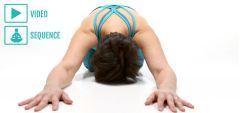
Try this practice every day for a week and let me know if it makes a difference!




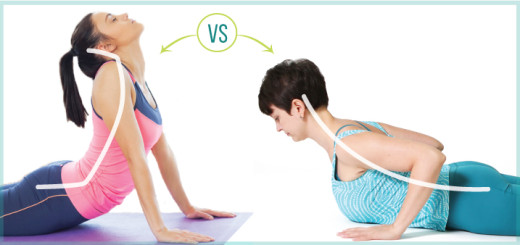
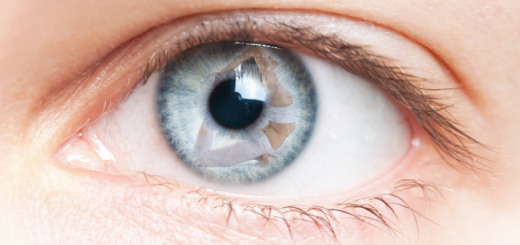
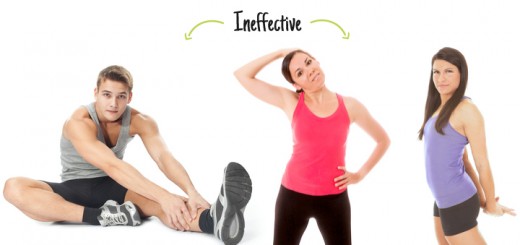
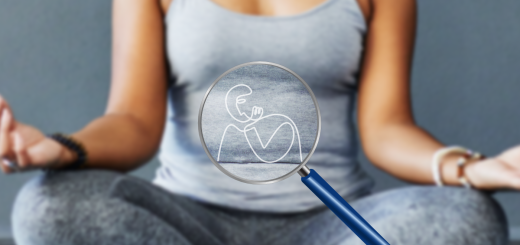















Hi Olga,
I can’t do your magic three challenge because I can’t read your practices. The thumbnails blur when enlarged, and the images don’t come in any way other than thumbnails.
Jackie
Hi Jackie! Thanks for alerting me of this – some sort of technical glitch. It’s fixed now! Please let us know how it goes!
that first cobra makes my shoulders cry!! 🙁
I agree, Terra! I would also add that it makes my lower back whimper…
[…] READ PART 2 […]
Thanks for these!
I agree theses are great poses for the mentioned benefits, but I’m curious why you name it COBRA pose, but the picture and description are SPHYNX?
Hi J! The major difference that I see between the Sphinx and Cobra pose is that in Sphinx you are resting your weight on your forearms and lifting your upper body from there. In Cobra pose you can put your arms in different positions: forearms down; hands down-elbows up; even place the arms all the way behind you, as long as you use your back muscles to lift you up, not your arms. In viniyoga tradition we call it “adaptation”, which basically means changing the form of the pose to achieve a particular structural effect. The gold of the Cobra pose is to strengthen your back muscles, and the arm position will depend on other factors (Ex: Are there any wrist problems? Do you want more challenge or less? Do you want to involve your upper back? etc.) Starting in January we will be talking a lot about adaptations, please tune in!
This is the best and most clearly explained yoga online I have come across. Exactly the way I like to explain to students. It’s not about showing off what we can do, but listening to our individual bodies. Thank you
Couldn’t agree more. Thank you Sheila!
Agreed !!! The way she explains to us in her articles, is rare even for yoga classes !
Hi Olga, thanks for sharing your insights about the magic three yoga poses. This is really helpful!
I have seen in several posts that you mention cobra pose as a very helpful and important pose which I absolutely agree with. Now in one of my classes, I have a student who struggles a lot with Shalabasana and cobra pose. She’s an athlete, and her hamstrings, hips and lower back muscles are shortened. We work a lot on adapting poses for her. For her, it’s currently almost impossible to life the upper body up in cobra pose, whereas placing her forearms on the mat is a doable option for her. Placing a folded blanket below the hips also works for her.
Have you ever had an experience like that one with a student?
Hello Olga,
I find Vajrasana not very comfortable on my knees and shins when returning to child pose, even on a blanket. However, this discomfort is relieved when i do the asana with my ankles dorsiflexed (forward) and toes fully extended. Are their any potential issues doing that? Thanks!
Hi Olga,
I keep coming back to this and love it. I would love to share this with the PT community, do you have a video of the Magic Three as a chair yoga sequence? I wasn’t able to find it.
PS Your app is so awesome, I have gotten a few patients on board with that as well and it is a great resource for us.
Hi Emily! Awesome! I do not have magic three poses in a chair in video format, but I always take requests 🙂 I will add it to my list. And thank you for your kind words about the app – I hope your patients will enjoy it as well!